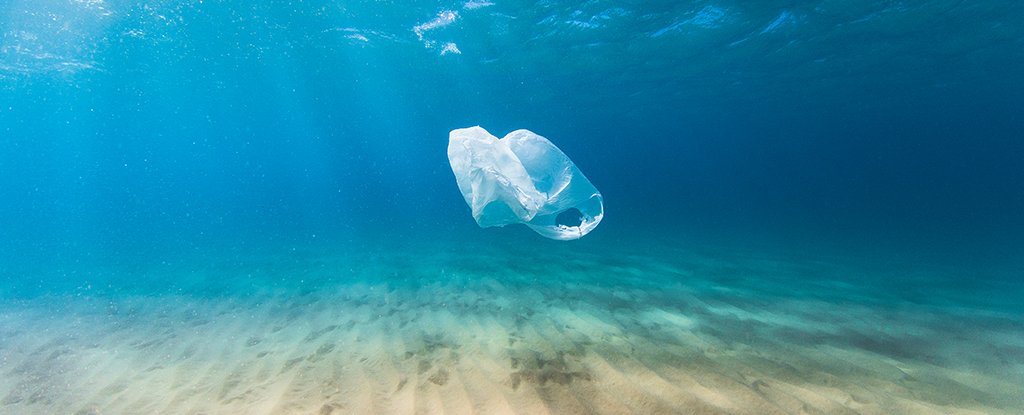Products You May Like
Leave a cheap plastic bag in the sun long enough and it’ll eventually crumble into a powdery mess, its petrochemical fragments destined to be blown far and wide by the elements.
Microplastic fragments – considered a major ecological hazard all on their own – might not even be the worst thing to come out of this disintegration.
A study led by researchers from Woods Hole Oceanographic Institution finds sunlight isn’t just capable of breaking plastics down; it can convert their base polymers and additives into a soup of new chemicals.
The process isn’t exactly slow either, with the variety of plastic bags experimented upon leaching a significant mix of soluble organic carbon compounds after being exposed to sunlight for less than 100 hours.
In spite of so many communities around the globe taking the environmental cost of convenience in a shopping bag seriously, it’s still all too easy to find a retailer that’s keen to hand over a single-use sack of polyethylene with your purchase.
Once used, there’s an all-too-likely chance the bag will find its way into a landfill rather than a recycling plant.
Or, worse, exposed somewhere out in the landscape, where eventually it flutters its way into waterways or the ocean to join the astonishing 640,000 tonnes of plastic dumped by commercial fishing each year.
The ultimate fate of this debris is anybody’s guess. A bunch ends up in the guts of wildlife, like birds and whales. Eventually, it breaks down into increasingly tiny microscopic chunks.
But many of the details on its distribution and fragmentation have remained unclear.
Studies over the years have hinted at the possibility of more sinister transformations, with research finding that sunlight can chemically transform plastics and their additives into new polymers, as well as smaller chemical units that dissolve more easily and are made airborne.
Individual discoveries are one thing. What wasn’t known until now is the sheer diversity of chemical products a plastic item could produce as it sits baking in the sun.
Researchers collected together a sample of consumer polyethylene bags from commercial enterprises such as Target and Walmart. Researchers also included a used bag from a CVS in a municipality with a plastic bag ban. An additive-free, low-density film bag made by Goodfellow served as a control.
The bags were characterized in terms of organic and metal content and spectral qualities. Researchers placed swatches from the bags into sterilized beakers filled with an ionized solution to simulate immersion in seawater.
Half of the beakers went into a dark draw for six days. The rest were left in a temperature-controlled chamber for five days, bathed in a consistent stream of radiation that mimicked the effects of sunlight.
Samples left in the dark were found to have released a tiny amount of dissolved organic compounds into the salty solution. Those left in the light, however, were swimming in new chemicals.
The used CVS bag presented the greatest difference in concentrations between the darkened container and the one exposed to sunlight, a measure that only went up the longer it was left in the light.
Pulling apart this plastic soup into a list of its constituent molecules revealed tens of thousands of dissolved organic compounds, all produced on a timescale equivalent to just weeks of floating about in the ocean under the glare of the sun.
The entire process is at least ten times more complex than chemists previously understood, leaving plenty of room for toxic materials we never even considered to be an issue.
“It’s astonishing to think that sunlight can break down plastic, which is essentially one compound that typically has some additives mixed in, into tens of thousands of compounds that dissolve in water,” says chemist Collin Ward.
“We need to be thinking not only about the fate and impacts of the initial plastics that get leaked into the environment but also about the transformation of those materials.”
Precisely what those compounds do in the environment, or in the tissues of the organisms living in it, is now the big question. In low concentrations, there might be relatively little to worry about.
But as plastic waste piles up in an ever-increasing environmental catastrophe, those concentrations could climb to levels we wished we’d paid attention to sooner.
“If the goal is to understand the fate and impacts of these materials, we need to study plastics that are representative of those that are actually leaked into the environment, as well as study the weathering processes acting on them,” says Ward.
This research was published in Environmental Science & Technology.
